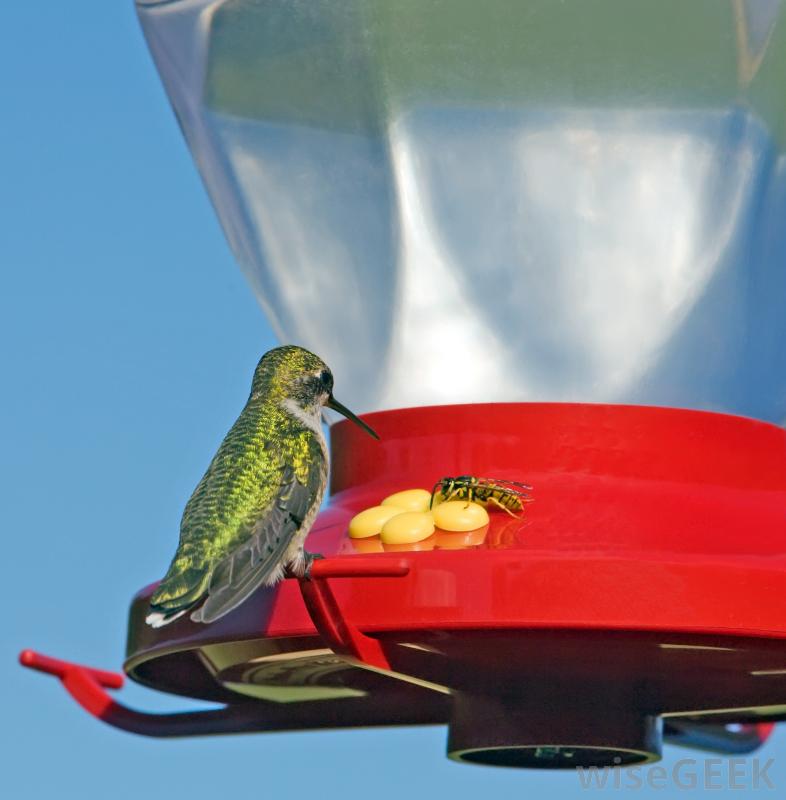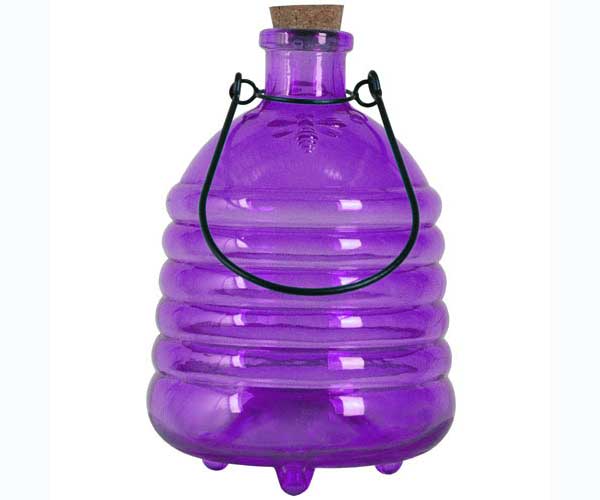 Last week, I wrote about ways to keep ants away from hummingbird feeders, but there are sometimes more alarming creatures out to get the nectar: wasps, hornets and yellow jackets.
Last week, I wrote about ways to keep ants away from hummingbird feeders, but there are sometimes more alarming creatures out to get the nectar: wasps, hornets and yellow jackets.
Flying insects, like all animals and bugs, contribute their own things to nature, but they can bully hummingbirds and orioles away by constantly swarming feeders. Some of the aggressive insects like yellow jackets will also attack and sting birds. Not to mention, these aren’t insects you’d want around your property where you or your kids are.
Unlike ants, which can be stopped with things as simple as a water moat, flying insects are a bit harder to keep away. Here are some things you can do from discouraging them from swarming your feeders.
Keep your yard clean
The first thing you should focus on is prevention. Limit or cover things in your yard that would attract these flying insects. For example, if you have a cat or dog, don’t leave their food sitting outside (this could also attract unwanted ants too). Cover any trashcans that may have food particles in it. You generally want to make sure there’s no standing water outside too. If you have a birdbath, consider getting one with moving water.
Buy feeders without any yellow
The only feeders really at risk of flying insects are hummingbird feeders and oriole feeders. Since wasps are attracted to the color yellow and can’t see red very well, getting a red feeder without any yellow is a good way to keep wasps from noticing it.
Get a dripless feeder
You can reduce the presence of flying insects by getting a feeder that doesn’t drip nectar. That will stop the scent of sugar from wafting in the air.
Take the feeders down for a few days
Once insects have found your feeders, they will usually be able to find them again if they’re in the same spot. So in order to get rid of them, you should take down the swarmed feeders for a few days. This is usually not a good idea because birds come to rely on these feeders, but if it’s getting overrun by unwanted insects, removing them for a few days will make the insects forget about them.
Another solution is to hang up wasp traps near the feeder. Fill the traps with highly concentrated sugar water (you need to make it stronger and more desirable than the hummingbird nectar or oriole jelly). The wasps will fall into the trap and be unable to get out.
Get a hummingbird feeder with bee guards
Bee guards keep flying insects from entering a hummingbird feeder, but leave enough space for hummingbirds to drink the nectar. Many hummingbird feeders already come with bee guards, but you can also buy them from manufacturers like Perky-Pet.
For oriole feeders, switch jelly with live mealworms
Getting flying insects away from oriole feeders is a bit more difficult because they’re usually more open and can’t accommodate bee guards. So, aside from taking it down, you can also just replace the jelly at the feeder with live mealworms, which will still attract orioles.




51 Comments
Yellow jackets are looking for protein, especially in the fall. Get a mason jar and a funnel. Put the funnel in the mouth of the jar. I like to tape it so no insects can get out around the funnel. Before taping the funnel in, put a piece of meat in the jar( a chicken neck works well) add water but leave some of the meat exposed. Don’t leave it out too long cause the meat will really stink if left too long. Reload as needed
My hummingbird feed doesn’t have the yellow center on the flower on the feeder but I’m still getting wasps in the feeder.
So I’m trying to come up with a way to block them out of the feeder
I have tried the bee trap close to my oriole jelly feeders. It trapped a lot of bees and flys, but did not stop the bees from invading the jelly bowls. Going to try the brown bag trick next. Hope it works . My poor orioles can’t get anywhere near their feeders with that many bees.